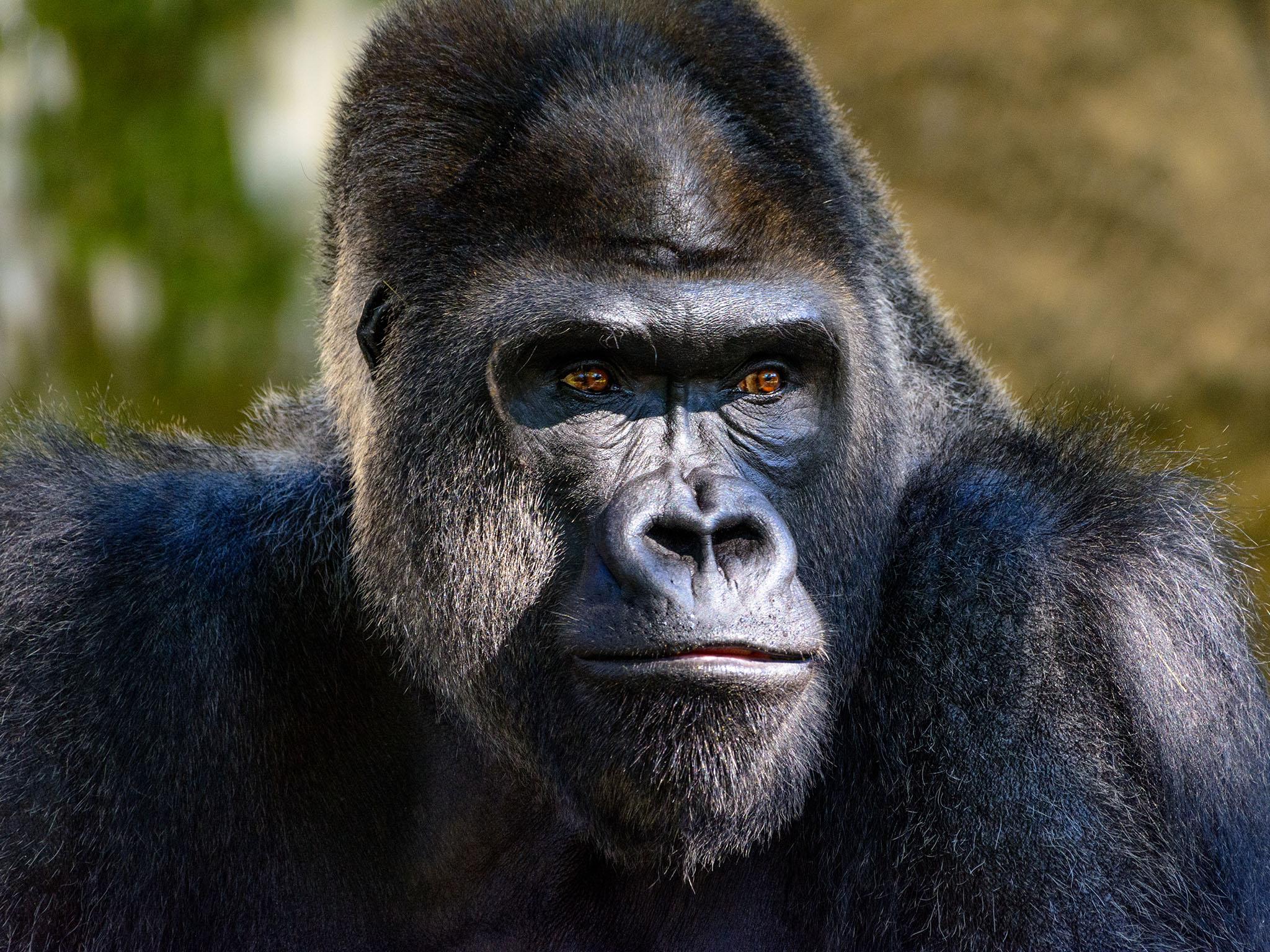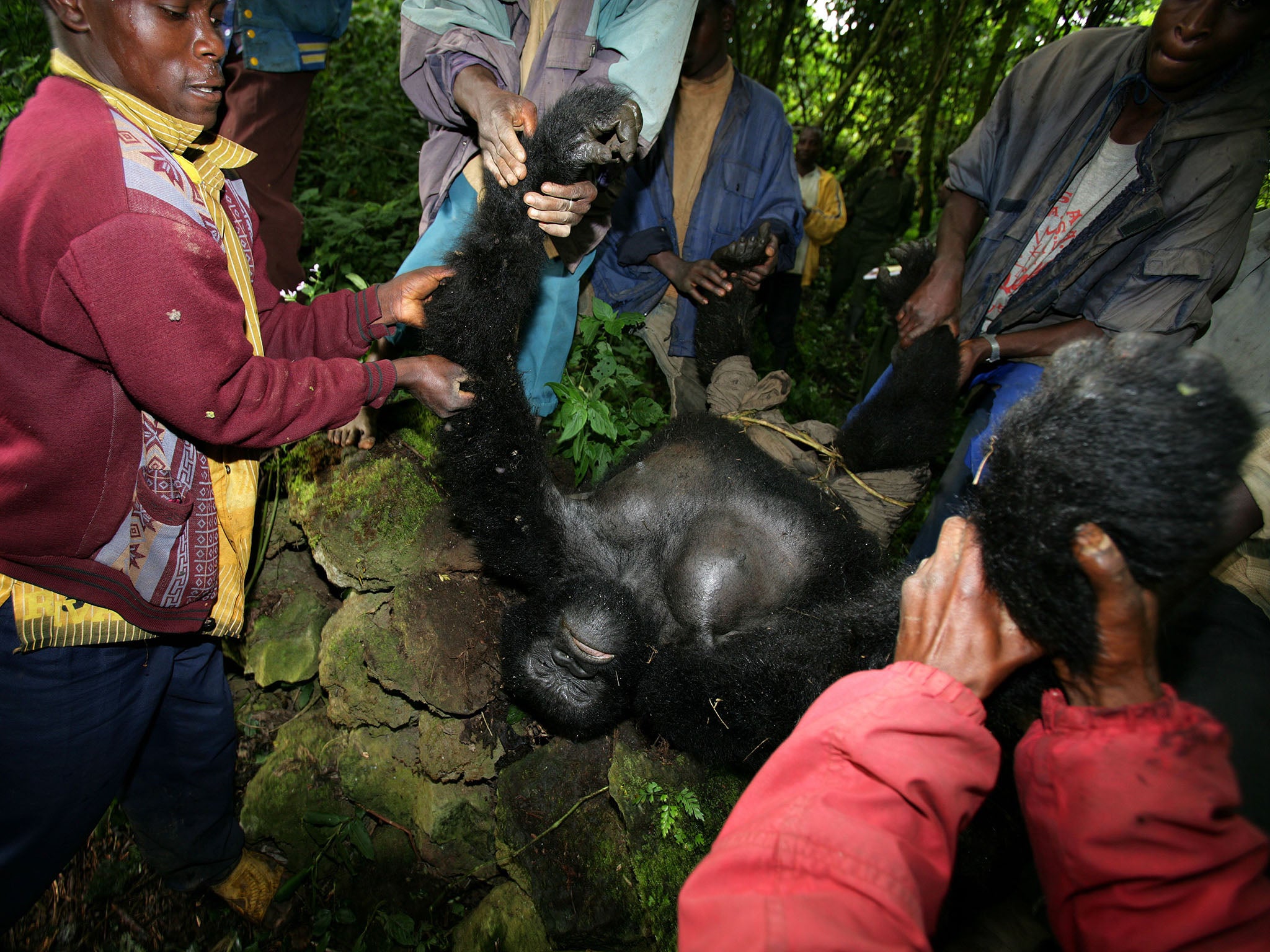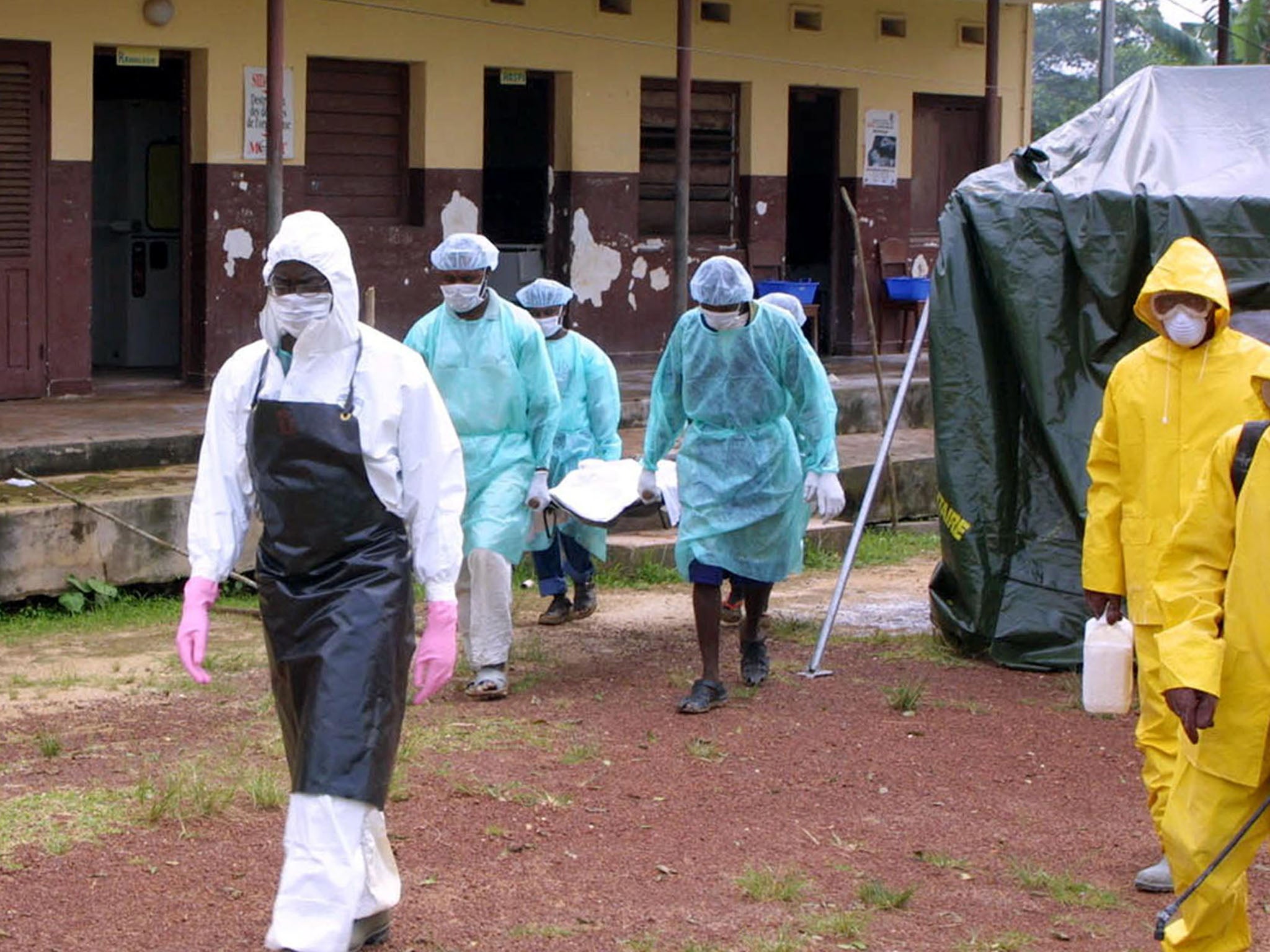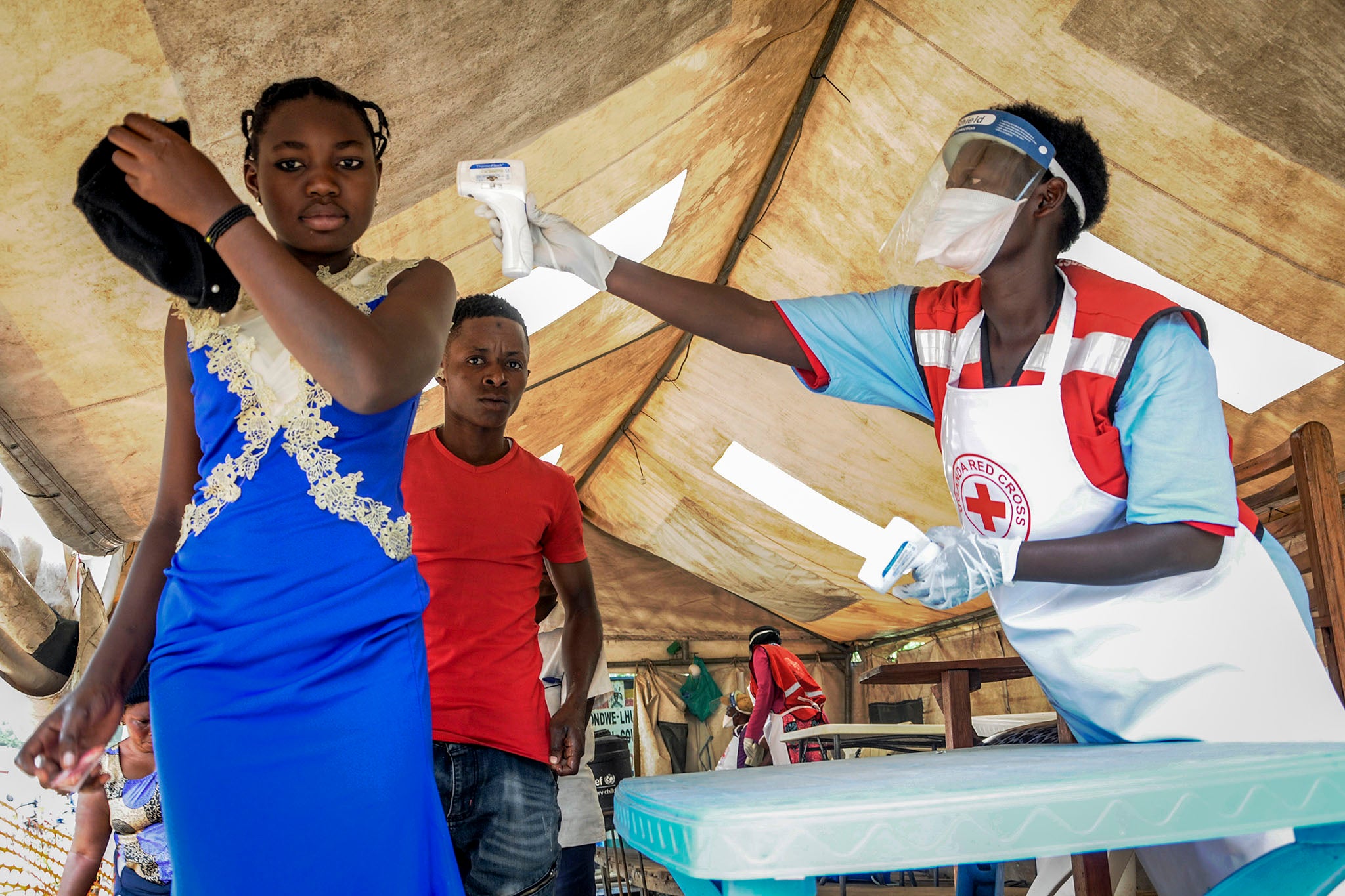‘It’s not like they’re laying on a golf course’: The 12-year hunt for Ebola-ridden gorillas
One group of scientists spent over a decade hunting ape carcasses in the Republic of Congo, in efforts to uncover how the disease spreads to humans, reports Donald G McNeil Jr

Your support helps us to tell the story
From reproductive rights to climate change to Big Tech, The Independent is on the ground when the story is developing. Whether it's investigating the financials of Elon Musk's pro-Trump PAC or producing our latest documentary, 'The A Word', which shines a light on the American women fighting for reproductive rights, we know how important it is to parse out the facts from the messaging.
At such a critical moment in US history, we need reporters on the ground. Your donation allows us to keep sending journalists to speak to both sides of the story.
The Independent is trusted by Americans across the entire political spectrum. And unlike many other quality news outlets, we choose not to lock Americans out of our reporting and analysis with paywalls. We believe quality journalism should be available to everyone, paid for by those who can afford it.
Your support makes all the difference.The worst part of sampling a dead gorilla for Ebola, says Dr William B Karesh, is the flies. “You can imagine the sense of panic,” he explains. “A hundred thousand ants and carrion flies are coming off the carcass or climbing up your arms. They get inside your hood and are crawling on your face or biting you.”
Karesh, a former chief field veterinarian at the Wildlife Conservation Society, which runs New York’s zoos, is describing his experience of being part of an unusual 12-year research project in the Republic of Congo. Scientists were trying to predict human Ebola outbreaks by first detecting them in dead apes and other forest animals.
In some ways the study, which lasted from 2006 to 2018, was a failure. Only 58 samples were gathered from dead animals, and none were positive for Ebola, which meant that the team’s hypothesis – that animal sampling could be an early warning system for human outbreaks – was not proved.
The good news, however, was that it was clear there was no epidemic, as hundreds of dead gorillas and chimpanzees had been reported before each of the multiple human outbreaks of Ebola in the Republic of Congo and neighbouring Gabon between 1994 and 2003.
Carcass surveillance had been “a massive, massive challenge,” concedes Sarah H Olson, a WCS wildlife health specialist working in the Republic of Congo and a co-author of the study, which was published in the journal Philosophical Transactions of the Royal Society B.
This is evident from the teams’ descriptions of how incredibly difficult it is to even find dead animals in dense rainforest, let alone safely take samples from them.
“It’s not like they’re laying out on a golf course,” Karesh says, explaining that sick animals often crawl off to die in thick brush or near water. “In the first day or two, hunters can pass one by and not even know it’s there. Later, they smell it or they even hear the flies.”
People saw dead animals as a gift from God, food they didn’t have to work for
But Olson argues that other components of the program were highly successful – particularly the efforts to deter people from eating gorilla carcasses, something that has been linked to many human outbreaks of Ebola. “People saw dead animals as a gift from God, food they didn’t have to work for,” she explains.
To tackle this, education teams visited hunting villages across a wide swath of the country to explain why it was dangerous to eat or even touch animals found dead, as well as putting up posters and airing radio adverts – and it worked. “People there adamantly told us they don’t eat carcasses anymore,” Olson says. “That’s a big change.”
But eating carcasses is not the sole source of human outbreaks of Ebola. The biggest – the 2013 West African outbreak that killed more than 11,000 people – is thought to have started when a child played inside a tree where Ebola-infected bats roosted and left droppings.

To this end, teams also trained local veterinarians and park rangers to don protective gear to safely perform tests, and helped the national laboratory in the Republic of Congo’s capital, Brazzaville, to improve its Ebola testing for both animals and humans.
Their work was supported by the US Agency for International Development’s $200m Predict program, a 10-year effort to find animal diseases that could jump to humans.
They cried, ‘It’s all over for us — we’ll be dead before we reach a village.’ We were very fortunate later that the carcass was not positive
There were a few close scares for the teams. Dr Alain U Ondzie, a WCS veterinarian in the Republic of Congo remembers one such moment in 2007, when he was leading a team that had run out of water after eight days of walking and camping in the jungle.
When they finally came across a rivulet, they threw themselves on the ground to drink – and only then did one spot a dead gorilla in the water just upstream.

“They cried, ‘It’s all over for us — we’ll be dead before we reach a village,’” Ondzie says. “We were very fortunate later to learn the carcass was not positive.”
Another challenge for the teams was relying on reports of carcasses from local hunters, most of whom are from the Mbenga subgroup of the forest-dwellers known as pygmies. (The term is often seen as pejorative but there is no uniformly accepted substitute.)
This system was made difficult by the fact that many hunting villages are bound in virtual enslavement to local farming villages, Karesh explains, which complicates relationships with outsiders. To make matters worse, many impoverished hunters do not own phones, and even if they do, coverage is spotty. This means that messages must be sent by asking passing drivers of logging trucks to relay the word when they reach the next town.
Despite the inevitable delays, sampling teams must rush to each carcass before scavengers finish it off. Many animals — including leopards, civets and smaller cats, crocodiles, mongoose, palm-nut vultures and even duikers, a kind of antelope — will dismember a carcass, carry off pieces and pick the bones clean.

For a team based in Brazzaville or another city, it may take several days — using a combination of 4x4s, pirogue canoes and walking — to reach a carcass.
On arrival, the teams must clear a path to the carcass and then establish a perimeter of about 60 feet, while two designated samplers don hooded Tyvek suits with goggles and three pairs of gloves. Working under those conditions in tropical heat can be excruciating, Karesh explains.
Other samplers described fogged goggles and cameras, and sweat running down their arms to form water balloons in the tips of their gloves, reducing their dexterity.
“It can be quite a fiddly thing,” says Dr Eeva Kuisma, a WCS technical adviser. She recalls being in a team that had to stand up in a dug-out canoe, trying to balance a test-tube rack, while sampling a dead monkey snagged in an overhanging branch.
On a similar not, Olson compared the delicate task to using the tweezers in the board game Operation – always nervous that the buzzer will go off – but with even higher stakes; the carcasses, like human ones, can teem with live virus for up to a week.
Merely living in the jungle can be nerve-racking, Kuisma adds, because you are always aware that animals you cannot see are watching you. Particularly feared by the teams were forest elephants, which lurked nearly invisibly in the leafy shadows.
Despite the difficulties, Olson argues, continuing surveillance and education programmes are cheap to run and also build trust with local villagers — something vividly lacking in the current Ebola outbreak in the Democratic Republic of Congo, where medical teams and treatment centres have been attacked. The idea, she says, “deserves a closer look from the international community.”
© New York Times
Join our commenting forum
Join thought-provoking conversations, follow other Independent readers and see their replies
Comments